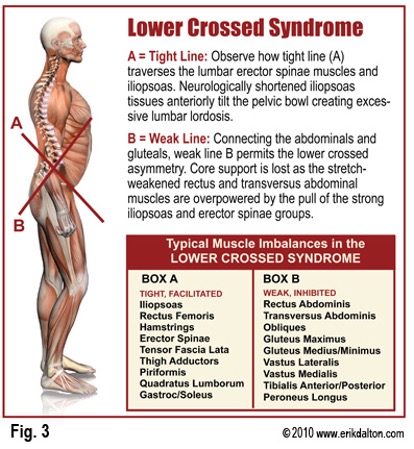Patients who come in for chiropractic care usually complain of “back pain” – but many don’t know the cause. In addition, patients often expect the issue to be one they’re familiar with. For example, your cousin had a herniated disc, so when you experience low back pain, the first condition that comes to mind may be “herniated disc.” However, there are lesser known low back conditions that are still quite common! In this article, we’ll discuss three of them, and take a look at how we address them.
3 Lesser Known Low Back Conditions
1. Lumbar Stenosis
This condition occurs when there is a narrowing of the spinal canal in the lumbar vertebrae (low back). Often, this results in compression of the spinal cord, which can lead to pain, numbness, discomfort and radiating symptoms. This is usually mechanically caused by the degenerative changes of aging. However, there are other causes.
The main physical causes of this condition are:
- Degeneration of the lumbar spine
- Lumbar disc herniation putting pressure on the spinal cord
- Osteoporosis
- Dwarfism (achondroplasia)
- Tumor
Degeneration of the spinal column is inevitable with aging and may reflect normal changes in an aging spine. It does not necessarily always result in lumbar stenosis but is often the most common cause.
While it is difficult or impossible to combat normal aging of the spine, there are some habits and tips you can use to reduce this condition related to the other causes. Reduce your chances of a lumbar disc herniation by learning proper bending and lifting biomechanics. Crouch, rather than bending, and lift by utilizing the power from your legs and not your back. As far as osteoporosis goes, make sure you are meeting your recommended calcium intake as well as incorporating weight-bearing activities into your exercise routine (lifting weights). Post-menopausal women tend to be more susceptible to this condition and should ensure they are doing everything they can to prevent osteoporosis.
2. Facet Syndrome
Over half of facet syndrome cases occur in the neck (cervical spine), and a third occurs in the low back (lumbar spine). Facet joints are the small joints in the back of the spine that are responsible for much of rotational movement and limit side-to-side movement. The pain is often worst when moving from a sitting position to a standing position or moving from a bent-over position back to an upright standing position.
 The main physical causes of this condition are:
The main physical causes of this condition are:
- Excessive weight
- Overuse (sports or labor)
- Whiplash/motor vehicle accident
- Pre-existing arthritis
- Sitting for long periods of time
However, with the proper education, you can protect yourself from many of these causes. The primary sufferers of this condition, especially chronic cases, often are in poor physical condition with weak stabilizing paraspinal muscles. A comorbid factor of this condition is often a desk job that involves sitting for most of the day. This type of patient usually has poor sitting posture, which can lead to a weakening of your spinal erectors and destabilize the spine, contributing to the condition. The importance of a strong core and training your spinal muscles cannot be overstated.
In cases where the injury stems from a problem related to overuse, poor posture or improper exercise, there are steps that you can take to help prevent these injuries from happening. Proper instruction about your postural habits can reduce the detrimental effects of sitting on the spine. In addition, education about correct lifting form can reduce these episodes of low back pain and help you build a healthy spine.
 3. Lower Crossed Syndrome
3. Lower Crossed Syndrome
The abdominal muscles are inactive and not supporting the spine, while the spinal erectors are pulling the lumbar spine forward, resulting in something called hyperlordosis. This means that the spine in the lower back has an exaggerated curve, which can result in accelerated degeneration of the joints of the spine.
At the same time, the hip flexors are facilitated and are chronically tight while the gluteus muscles are inhibited and have reduced activation. This leaves the back muscles to do most of the work to extend the spine instead of the gluteus muscles keeping the pelvis level.
Back to Health Chiropractic’s Treatment Approach for These Low Back Conditions
1. Chiropractic spinal and extremity adjustments
Adjustments help restore normal motion, balance musculature and reduce pain.
2. Physiotherapy
Your chiropractor will use this to reduce acute pain and inflammation.
3. Muscle and soft tissue techniques
These help to reduce muscle pain and tightness and improve muscle/ligament function.
4. Therapeutic exercises
Specific “low tech” rehabilitation exercises and assisted stretches are given to improve flexibility, function, and strength and prevent re-injury.
5. Diet and supplement suggestions
An anti-inflammatory diet and specific supplements can help reduce neck pain.
6. Lifestyle modifications
Postural and repetitive stress activities may need to be addressed.
All these treatments depend on the needs and tolerance of each patient.
For more information or to get help treating your low back pain, especially these lesser known low back conditions, contact Back to Health Chiropractic today!
